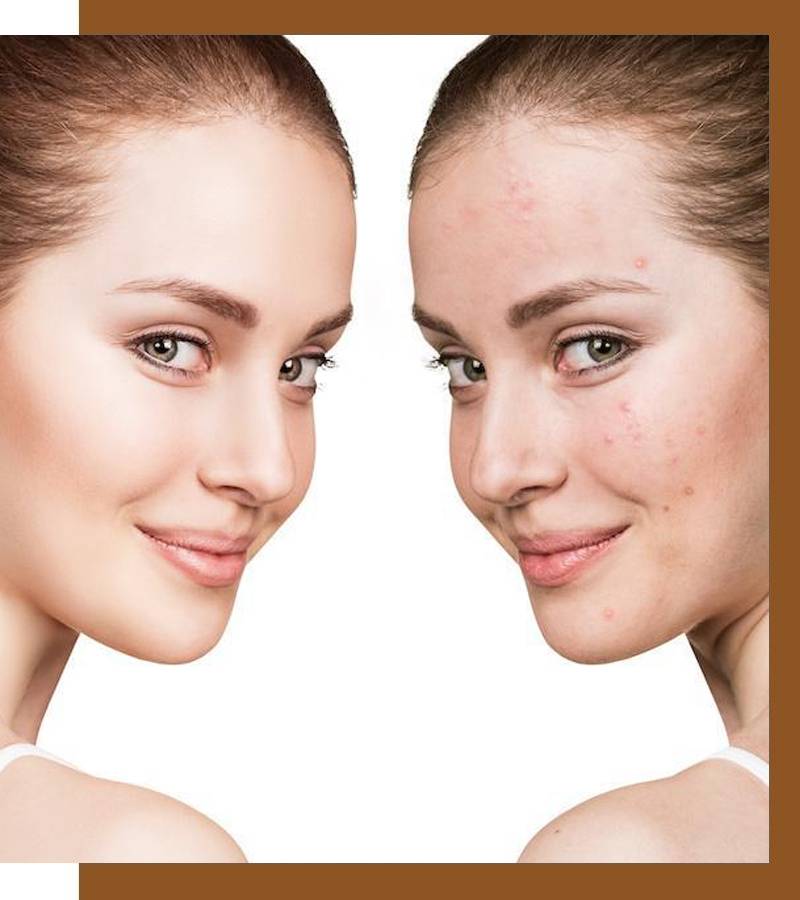
How To Get Rid Of Fungal Acne?
Do you have a few small pimples that won’t go away, even with your standard acne treatments? Then you might have had an encounter with something called fungal acne which is acne-looking bumps, usually tiny, consistent, red, and/or itchy in nature. So, you now have to worry about fungal acne on top of the non-inflammatory forms of acne, such as blackheads and whiteheads, and the inflammatory forms, such as pustules, papules, nodules, and cysts.
Don’t worry we have got it covered for you!
Let’s begin..
What does fungal acne look like?
Malassezia folliculitis, often known as fungal acne, is characterized by itchy, red papules or pustules that are 1 to 2 millimeters in size, or roughly the size of a pencil tip. These are typically smaller and somewhat similar in size; they are not your typical cystic zits or large, mushy whiteheads.
Fungal acne appears mostly on the back, chest, sides of the arms and shoulders—mainly, all the areas you catch bacteria or sweat, both of which worsen fungal acne but dermatologists at Dermiq Clinic say it can also be noticed on the face and neck, generally beside the hairline and the sides.
What are the causes of fungal acne?
The yeast that causes fungal acne is always there on your skin. Normally, the yeast, various fungi, and bacteria that are also a component of your skin get balanced by your body naturally. But when the natural balance gets upset, an overgrowth could take place. At that point, the hair follicles become infected and acne-like symptoms start to appear on your skin.
A lot of conditions can disturb the stability of the bacteria and fungi, together with:
- Packed moisture: Being in a sweaty workout outfit for a long time could motivate yeast growth or even re-wearing your unclean workout clothes could affect your skin from fungi that would have developed in the clothes.
- Medication: The number of bacteria on your skin can be decreased by taking antibiotics but that might encourage fungus to grow excessively.
- Compromised immune system: People with suppressed immune systems can possibly get fungal acne.
- A change in diet: These bacteria usually feed on carbohydrates, so by managing your intake of sweets and carb-rich foods, you may be able to inhibit the growth of fungi and yeast.
- Wearing tight clothes: Wearing un-breathable clothing frequently might lead to increased sweating and wetness. This might encourage a skin condition where yeast can develop easily.
- Warm, humid environments: Fungal acne may be more common in people who live in warmer areas where sweating is frequent.
How do you know if you have fungal acne?
You should be aware of the following symptoms of fungal acne:
- Tiny breakouts on the skin, normally in the form of a bunch of tiny whiteheads.
- Typically these appear like papules and pustules on your back, chest and shoulders. It most likely affects different parts of your body that are covered by clothing as it allows the yeast to develop easily.
- Unlike certain other types of pimples, fungus-related whiteheads and bumps rarely come on your head.
- Redness and other inflammation-related symptoms may appear.
- The skin may occasionally become extremely itchy.
- Hot and humid climates worsen your symptoms.
When should I see a doctor?
Book a consultation with your dermatologist if you’ve tried standard acne treatment for your suspected fungal acne and the outbreak lasts longer than 3 weeks. And if the symptoms come back soon after you believed they had gone away, consider rescheduling another consultation with your dermatologist. There may be a treatment that can help stop the recurrence and avert potential long-term problems. With your doctor, you can also explore preventive measures.

